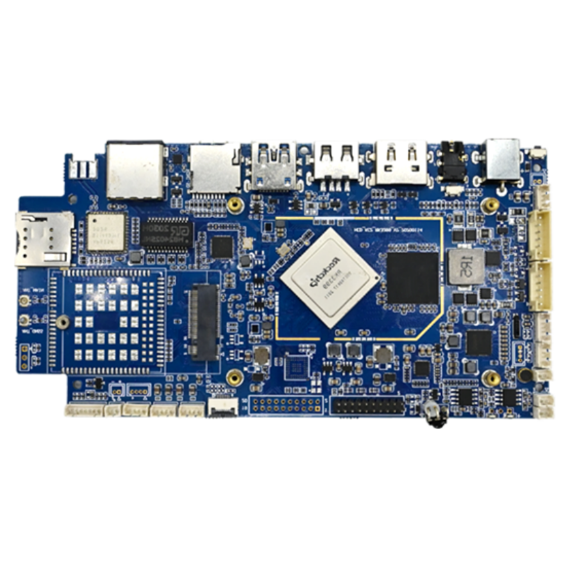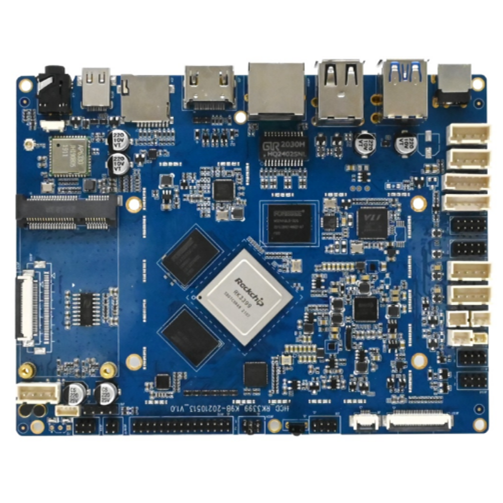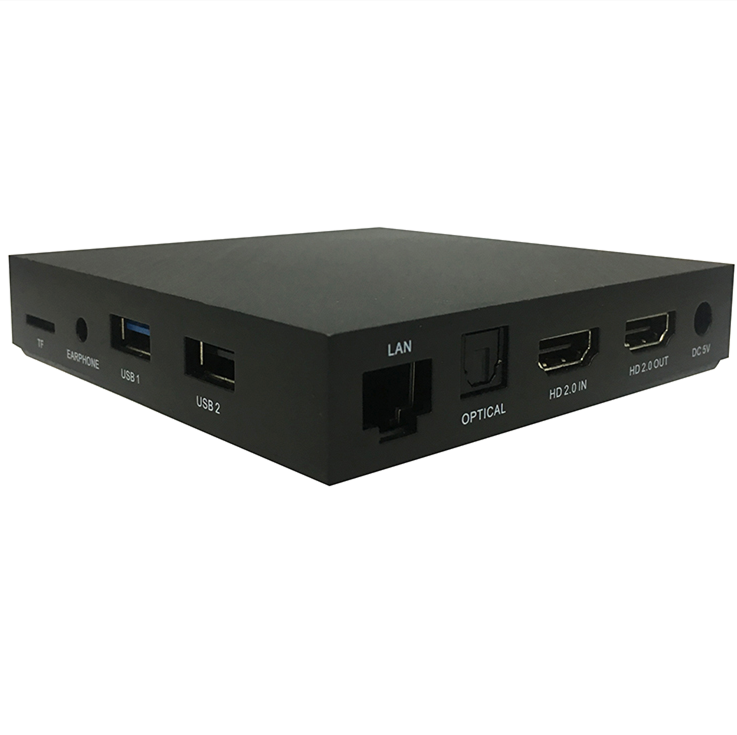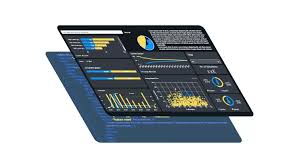
Revolutionary Digital Signage Advertising and Dynamic Consumer Strategies Transform Modern Marketing
Products For Digital Signage Advertising




In today’s fast-paced digital world, Digital Signage Advertising has emerged as a revolutionary tool that transforms traditional marketing methods. With the rapid expansion of digital technology, it has become an essential component in the marketing arsenal for businesses worldwide.
Historical Evolution of Digital Signage Advertising
The journey of Digital Signage Advertising began with the emergence of electronic displays and basic video content in the late 20th century. Early versions were limited to static images and pre-recorded videos shown on bulky monitors. However, as technology advanced, Digital Signage Advertising evolved to include dynamic content, real-time updates, and interactive features.

Initially, digital displays were primarily used in retail spaces and airports, where they could capture the attention of a captive audience. As time went on, advancements in display technology, connectivity, and software development allowed this medium to become more flexible and engaging. Today, Digital Signage Advertising is characterized by its ability to deliver targeted messaging, personalized content, and interactive experiences that adapt to the needs of consumers in various environments.
Below is a timeline summarizing key milestones in the evolution of Digital Signage Advertising:
plays for advertising2005Integration of Dynamic ContentEnabled real-time updates and interactive features2015Adoption of High-Definition DisplaysEnhanced image quality and visual impact2020Incorporation of Artificial IntelligenceRevolutionized content personalization and targeting
| Year | Milestone | Impact on Digital Signage Advertising |
|---|---|---|
| 1995 | Emergence of Electronic Billboards | Introduced basic digital displays for advertising |
| 2005 | Integration of Dynamic Content | Enabled real-time updates and interactive features |
| 2015 | Adoption of High-Definition Displays | Enhanced image quality and visual impact |
| 2020 | Incorporation of Artificial Intelligence | Revolutionized content personalization and targeting |
The historical development illustrates how this marketing medium has continuously adapted to technological innovations and consumer demands. As each new breakthrough emerged, Digital Signage Advertising became more versatile and powerful, reinforcing its status as a vital marketing tool.
Technological Innovations Driving Digital Signage
The rapid evolution of digital signage is closely linked to several technological innovations. One of the most significant developments is the transition from static to dynamic content. Modern systems utilize high-definition displays, sophisticated content management systems, and real-time data integration to create engaging experiences for consumers.
Artificial intelligence and machine learning have also had a profound impact on Digital Signage Advertising. These technologies enable advertisers to analyze vast amounts of data and adjust content in real time to suit the preferences of the target audience. For instance, Digital Signage Advertising platforms can now track audience engagement, measure dwell time, and even adjust the displayed message based on environmental factors. This data-driven approach enhances the effectiveness of Digital Signage Advertising and allows marketers to optimize their campaigns continuously.

Interactive features are another hallmark of modern Digital Signage Advertising. Touchscreens, gesture recognition, and mobile integration have transformed Digital Signage Advertising from a one-way communication medium into an interactive platform. Consumers can now interact with digital displays, access additional product information, and even make purchases directly from Digital Signage Advertising installations.

Below is a table summarizing key technological innovations:
| Technology | Description | Contribution to Digital Signage |
|---|---|---|
| High-Definition Displays | Use of 4K and UHD screens | Provides enhanced image quality and visual appeal |
| Content Management Systems | Software for scheduling and managing content | Allows real-time updates and centralized control |
| Artificial Intelligence | Algorithms for data analysis and personalization | Optimizes targeting and engagement |
| Interactive Interfaces | Touchscreens, gesture recognition, mobile integration | Transforms the experience into an interactive one |
These technological advancements have been pivotal in shaping the landscape of Digital Signage Advertising, allowing businesses to communicate more effectively with their audiences.
Market Trends and Economic Impact of Digital Signage
The market for digital signage has grown exponentially over the past decade. As businesses seek more efficient and measurable ways to reach their audiences, Digital Signage Advertising has become an attractive option for marketers worldwide. According to industry reports, the global market is expected to continue its upward trajectory, driven by advancements in technology and increasing consumer engagement.
One of the key drivers behind this growth is its ability to provide measurable results. Unlike traditional print and broadcast advertising, digital displays offer real-time analytics, enabling marketers to track effectiveness and adjust strategies accordingly. This data-driven approach has made it a preferred method for maximizing return on investment.
Another important trend is the shift toward hyper-local and contextually relevant content. With location-based services and geotargeting, digital signage can deliver personalized messages based on location, time of day, or weather conditions. This customization has significantly enhanced impact, leading to higher engagement and better customer experiences.
Below is a table presenting key market trends and statistics:
| Market Trend | Description | Implications |
|---|---|---|
| Data-Driven Analytics | Use of real-time data to measure effectiveness | Enables optimization and better ROI measurement |
| Hyper-Local Targeting | Delivery of location-specific content | Increases relevance and engagement |
| Mobile Integration | Synchronization with mobile devices | Expands reach and interactive potential |
| Cost Efficiency | Lower production and distribution costs | Makes it accessible to a wider range of businesses |
The economic impact of Digital Signage Advertising is significant. Businesses across sectors—from retail and hospitality to transportation and healthcare—are leveraging it to improve customer engagement, drive sales, and build brand awareness.
Implementation Strategies for Digital Signage
Effective implementation requires careful planning and strategic execution. Marketers must consider factors like location, audience demographics, content strategy, and technological capabilities. One benefit of Digital Signage Advertising is its flexibility, allowing businesses to tailor campaigns to specific objectives.
When implementing, the first step is determining the optimal placement of displays. High-traffic areas such as shopping malls, transit hubs, and corporate lobbies are ideal locations. In these settings, digital signage can capture a large audience and deliver impactful messages.
Content is another critical element. The material must be engaging, relevant, and easy to understand. Marketers should incorporate multimedia elements like videos, animations, and interactive graphics to create an immersive experience that resonates with consumers.
Below is a table that presents key market trends and statistics for Digital Signage Advertising:
| Market Trend | Description | Implications for Digital Signage Advertising |
|---|---|---|
| Data-Driven Analytics | Use of real-time data to measure campaign effectiveness | Enables continuous optimization and better ROI measurement in Digital Signage Advertising |
| Hyper-Local Targeting | Delivery of location-specific content based on consumer behavior | Increases relevance and engagement in Digital Signage Advertising |
| Mobile Integration | Synchronization with mobile devices for enhanced interactivity | Expands the reach and interactive potential of Digital Signage Advertising |
| Cost Efficiency | Lower production and distribution costs compared to traditional media | Makes Digital Signage Advertising accessible to a wider range of businesses |
The economic impact of Digital Signage Advertising is significant. Businesses across sectors—from retail and hospitality to transportation and healthcare—are leveraging it to improve customer engagement, drive sales, and build brand awareness.
Implementation Strategies for Digital Signage
Effective implementation requires careful planning and strategic execution. Marketers must consider factors like location, audience demographics, content strategy, and technological capabilities. One benefit of Digital Signage Advertising is its flexibility, allowing businesses to tailor campaigns to specific objectives.
When implementing, the first step is determining the optimal placement of displays. High-traffic areas such as shopping malls, transit hubs, and corporate lobbies are ideal locations. In these settings, digital signage can capture a large audience and deliver impactful messages.
Content is another critical element. The material must be engaging, relevant, and easy to understand. Marketers should incorporate multimedia elements like videos, animations, and interactive graphics to create an immersive experience that resonates with consumers.
Below is a table outlining best practices for implementation:
| Best Practice | Description | Impact |
|---|---|---|
| Strategic Placement | Identifying high-traffic areas for displays | Maximizes audience reach and engagement |
| Engaging Content Creation | Developing multimedia content that is dynamic | Enhances consumer experience and brand messaging |
| Regular Content Updates | Scheduling timely updates to keep content fresh | Maintains audience interest and effectiveness |
| Data Analytics Integration | Incorporating real-time analytics to monitor performance | Facilitates continuous improvement |
By following these strategies, businesses can ensure their campaigns are effective and efficient. The ability to adapt content quickly and measure engagement in real time gives digital signage an advantage over static forms of advertising.
Case Studies in Digital Signage
The success of digital signage is best illustrated through real-world examples. Numerous businesses have adopted Digital Signage Advertising and experienced measurable improvements in customer engagement, brand recognition, and revenue growth.
One notable example is a major retail chain that implemented displays across its stores. By placing them at entrances and high-traffic areas, the retailer showcased promotions and new products dynamically. This not only increased foot traffic but also enhanced the in-store experience, leading to higher conversion rates and sales.
Another success story comes from the transportation sector, where a metropolitan transit authority adopted digital signage at bus stops and train stations. It was used to provide real-time updates, emergency alerts, and local ads, improving the commuter experience while generating additional revenue through partnerships.
A third case study involves a healthcare provider that leveraged displays in hospital lobbies to communicate health messages, appointment reminders, and patient testimonials. The interactive nature allowed patients to access additional information, enhancing engagement and satisfaction.
Below is a table summarizing key metrics from these case studies in Digital Signage Advertising:
| Sector | Application Area | Key Outcomes |
|---|---|---|
| Retail | In-store promotions and product launches | Increased foot traffic, higher conversion rates, improved customer engagement |
| Transportation | Real-time transit information | Enhanced commuter experience, reduced wait times, increased ad revenue |
| Healthcare | Patient communication and education | Improved patient satisfaction, increased information accessibility, better engagement |
These case studies clearly demonstrate the transformative potential of digital signage across various industries. By providing real-time information and engaging content, it has proven to be a powerful tool in driving both customer satisfaction and business performance.
Digital Signage Advertising Market Trends
This chart shows the market share of different types of digital signage over time.
Challenges and Solutions in Digital Signage
Despite the numerous benefits, the implementation of digital signage is not without challenges. One primary issue faced by marketers is the integration of diverse technologies and platforms. As Digital Signage Advertising relies on a combination of hardware, software, and connectivity, ensuring seamless operation can be complex. Technical glitches, outdated displays, and network issues can hinder performance.
Content management also presents a challenge. With the need to constantly update and refresh content, maintaining a dynamic network requires significant resources and expertise. Furthermore, ensuring content remains relevant and aligned with marketing objectives is critical for campaign success.
Another challenge is measuring effectiveness. While modern analytics tools have improved the ability to track engagement and conversion, accurately attributing sales and other outcomes to digital signage can be difficult. Marketers must rely on metrics like dwell time, interaction rates, and customer feedback to gauge success.
To address these challenges, businesses are adopting several solutions. First, investing in robust content management systems and reliable hardware ensures networks run smoothly. Second, leveraging advanced analytics and data integration helps measure impact more accurately. Finally, continuous staff training and collaboration with technology partners are crucial for keeping campaigns current and effective.
Below is a table summarizing common challenges along with potential solutions:
| Challenge | Impact | Proposed Solution |
|---|---|---|
| Technology Integration | Technical glitches and incompatibility affect performance | Invest in reliable hardware and unified platforms |
| Content Management | Outdated or irrelevant content reduces engagement | Implement advanced systems for real-time updates |
| Measurement of Effectiveness | Difficulty in attributing outcomes to campaigns | Use advanced analytics and multi-metric tracking |
By addressing these challenges, companies can ensure their initiatives are resilient, efficient, and impactful. The continued evolution of Digital Signage Advertising technology promises to overcome current obstacles and enhance its effectiveness.
Future Trends and Prospects in Digital Signage
The future of digital signage is poised to be exciting, with emerging technologies and strategies set to redefine digital marketing. One major trend is the integration of augmented reality (AR) and virtual reality (VR). These immersive technologies have the potential to transform traditional advertising by creating interactive experiences that captivate consumers in new ways.
Another promising development is the increased use of artificial intelligence. AI-driven content personalization, predictive analytics, and automated scheduling are expected to elevate Digital Signage Advertising. By harnessing AI, marketers can deliver hyper-targeted messages, optimize content in real time, and achieve a higher return on investment.
Moreover, the growing convergence of mobile and digital signage will further enhance the capabilities of Digital Signage Advertising. As more consumers use smartphones and wearable devices, the synergy between mobile marketing and Digital Signage Advertising can create a seamless, integrated experience. For instance, interactive kiosks and QR codes on digital displays allow consumers to quickly access additional information, special offers, or even complete purchases, thereby enhancing the overall effectiveness of Digital Signage Advertising.

Sustainability and energy efficiency are also expected to play a larger role. With increasing environmental awareness, advertisers are focusing on energy-efficient displays and eco-friendly solutions that reduce the carbon footprint of networks. This trend will drive innovation in materials, power consumption, and system design, making digital signage more sustainable.
Below is a table outlining key future trends and their potential impact:
| Future Trend | Description | Impact |
|---|---|---|
| Augmented and Virtual Reality | Integration of AR and VR for immersive experiences | Transforms consumer engagement and interaction |
| Artificial Intelligence | Enhanced personalization and predictive analytics | Optimizes targeting and real-time adjustments |
| Mobile Convergence | Synergy between mobile devices and digital displays | Creates seamless interactive experiences and increases reach |
| Sustainability Innovations | Development of energy-efficient display solutions | Reduces environmental impact and operational costs |
As these trends unfold, the future of Digital Signage Advertising promises to be dynamic and innovative. Companies that embrace these technologies will be well-positioned to capitalize on the evolving digital landscape.
Integrating Digital Signage Into a Multichannel Marketing Strategy
In today’s integrated marketing environment, digital signage is increasingly combined with other media channels. This multichannel approach ensures messages are reinforced and consumers encounter consistent branding across touchpoints. By integrating with social media, email marketing, and in-store promotions, companies can create a cohesive brand experience.
For example, a retailer might use in-store displays to showcase dynamic product information while using social media to amplify the campaign’s reach. This coordinated effort enhances effectiveness and provides valuable data on consumer behavior to refine future campaigns. Thus, Digital Signage Advertising becomes a central pillar in an integrated marketing strategy.
Best Practices for Maximizing Impact
To leverage its potential, marketers should follow best practices to ensure campaigns are engaging and adaptable. First, content must be high quality, relevant, and updated frequently to capture attention. This means investing in professional design and regular updates to keep displays fresh.
Second, data analytics should be at the core of every campaign. By monitoring metrics like viewership, dwell time, and interaction rates, marketers can gain insights into performance and make data-driven decisions. Additionally, testing different content formats and configurations helps determine what works best.
In summary, Digital Signage Advertising represents a transformative force in digital marketing. Over the years, it has evolved from simple electronic displays to dynamic, interactive, and data-driven solutions that drive engagement. With its roots in technological innovation and momentum powered by artificial intelligence, mobile integration, and immersive technologies, digital signage is poised to continue its growth and influence in the marketing landscape.
